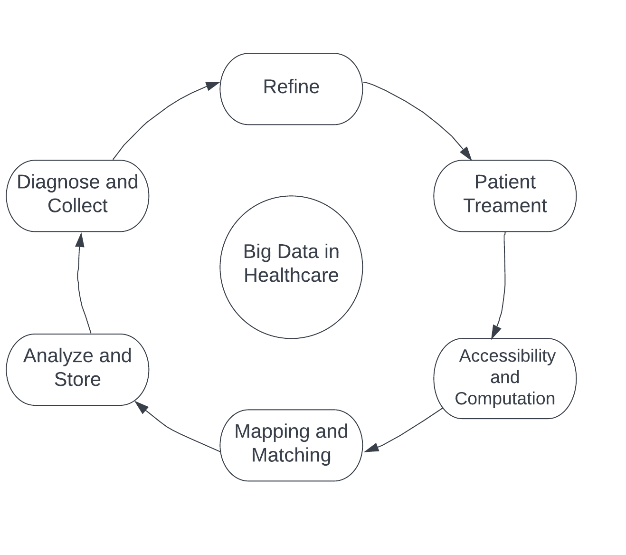Epidemic Diseases Forestall Module using Data Science and SIR Algorithms
Main Article Content
Abstract
This survey paper is intended to prevent epidemic diseases and pandemic diseases. According to the WHO every year in the world over 17 million people die due to this type of disease. Epidemic diseases have lower transmission rate than pandemic diseases and they spread in a bounded area. On the other hand, pandemic diseases have higher transmission rate and it can easily spread in an immense area. We can control this type of disease in its initial stages before it becomes a fatal disease like covid-19. Lack of knowledge in peoples and inefficient systems used by higher authorities in that region are the main reasons to spread diseases in larger areas. But using data science and the epidemic compartment models it’s possible to control infectious diseases in its initial stages. For different diseases there are different compartment algorithms that are able to estimate the number of cases in the future. These models often use ordinary differential equations for predicting things. Using data science, we are able to find what are key factors responsible for the spreading of that particular disease.
Article Details
References
Q. Zhang, “Data science approaches to infectious disease surveillance,” vol. 380, no. 2214. Royal Society, Nov. 22, 2021. DOI:https://doi.org/10.1098/rsta.2021.0115. https://royalsocietypublishing.org/doi/10.1098/rsta.2021.0115
Q. Zhang, Jianxi Gao, J. T. Wu, Z. Cao, and D. D. Zeng, “Data science approaches to confronting the COVID-19 pandemic: a narrative review,” vol. 380, no. 2213. Royal Society, Nov. 22, 2021. DOI: https://doi.org/10.1098/rsta.2021.0127. https://royalsocietypublishing.org/doi/10.1098/rsta.2021.0127
R. T. Alqahtani, “Mathematical model of SIR epidemic system (COVID-19) with fractional derivative: stability and numerical analysis,” vol. 2021, no. 1. pp. 2-, Jan. 04, 2021. DOI:10.1186/s13662-020-03192-w. https://advancesindifferenceequations.springeropen.com/articles/10.1186/s13662-020-03192-w.
Ana Oliveira, Yosef Ben-David, Susan Smit, Elena Popova , Milica Mili?. Enhancing Data-driven Decision Making with Machine Learning in Decision Science. Kuwait Journal of Machine Learning, 2(3). Retrieved from http://kuwaitjournals.com/index.php/kjml/article/view/200
S. V. G. Subrahmanya et al., “The role of data science in healthcare advancements: applications, benefits, and future prospects.” Aug. 16, 2021. doi: 10.1007/s11845-021-02730-z. https://link.springer.com/article/10.1007/s11845-021-02730-z
G. S. Leite, A. B. Albuquerque, and P. R. Pinheiro, “Applications of Technological Solutions in Primary Ways of Preventing Transmission of Respiratory Infectious Diseases-A Systematic Literature Review.,” vol. 18. Oct. 14, 2021. DOI: 10.3390/ijerph182010765. https://www.mdpi.com/1660-4601/18/20/10765.
Chinmay Rawat. (2023). AI for Effective use of Water in India for Crop Cultivation. International Journal of Intelligent Systems and Applications in Engineering, 11(3s), 266–270. Retrieved from https://ijisae.org/index.php/IJISAE/article/view/2683.
M. Paoluzzi, N. Gnan, F. Grassi, M. Salvetti, N. Vanacore, and A. Crisanti, “A single-agent extension of the SIR model describes the impact of mobility restrictions on the COVID-19 epidemic.” Dec. 28, 2021. doi: 10.1038/s41598-021-03721-x. https://www.nature.com/articles/s41598-021-03721-x
P. Samui, J. Mondal, and S. Khajanchi, “ A mathematical model for COVID-19 transmission dynamics with a case study of India,” vol. 140. pp. 110173-, Nov. 01, 2020. DOI: https://doi.org/10.1016/j.chaos.2020.110173. https://www.sciencedirect.com/science/article/pii/S0960077920305695
M. Mandal, S. Jana, S. K. Nandi, A. Khatua, S. Adak, and T. K. Kar, “A model based study on the dynamics of COVID-19: Prediction and control,” vol. 136. pp. 109889-, Jul. 01, 2020. DOI: https://doi.org/10.1016/j.chaos.2020.109889. https://www.sciencedirect.com/science/article/pii/S0960077920302897.
Prof. Naveen Jain. (2013). FPGA Implementation of Hardware Architecture for H264/AV Codec Standards. International Journal of New Practices in Management and Engineering, 2(01), 01 - 07. Retrieved from http://ijnpme.org/index.php/IJNPME/article/view/11.
K. Gostic, A. C. Gomez, R. O. Mummah, A. J. Kucharski, and J. O. Lloyd-Smith, “Estimated effectiveness of symptom and risk screening to prevent the spread of COVID-19,” vol. 9. eLife Sciences Publications, Ltd, Feb. 24, 2020. doi: 10.7554/eLife.55570. https://elifesciences.org/articles/55570
Y.-C. Chen, Ping-En Lu, C.-S. Chang , and T.-H. Liu, “A Time-Dependent {SIR} Model for {COVID}-19 With Undetectable Infected Persons,” vol. 7. Institute of Electrical and Electronics Engineers (IEEE), pp. 3281–3294, Oct. 0, 2020. doi: 10.1109/tnse.2020.3024723. https://ieeexplore.ieee.org/document/9200529
S. Latif et al., “Leveraging Data Science to Combat COVID-19: A Comprehensive Review,” vol. 1. pp. 85–103, 0 0, 2020. doi: 10.1109/TAI.2020.3020521. https://ieeexplore.ieee.org/document/9184922.

